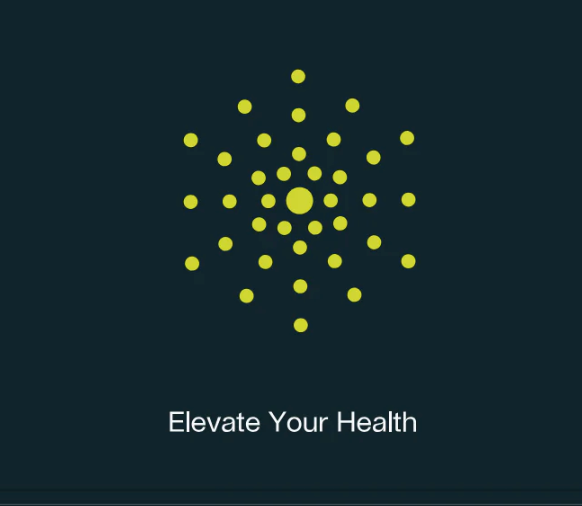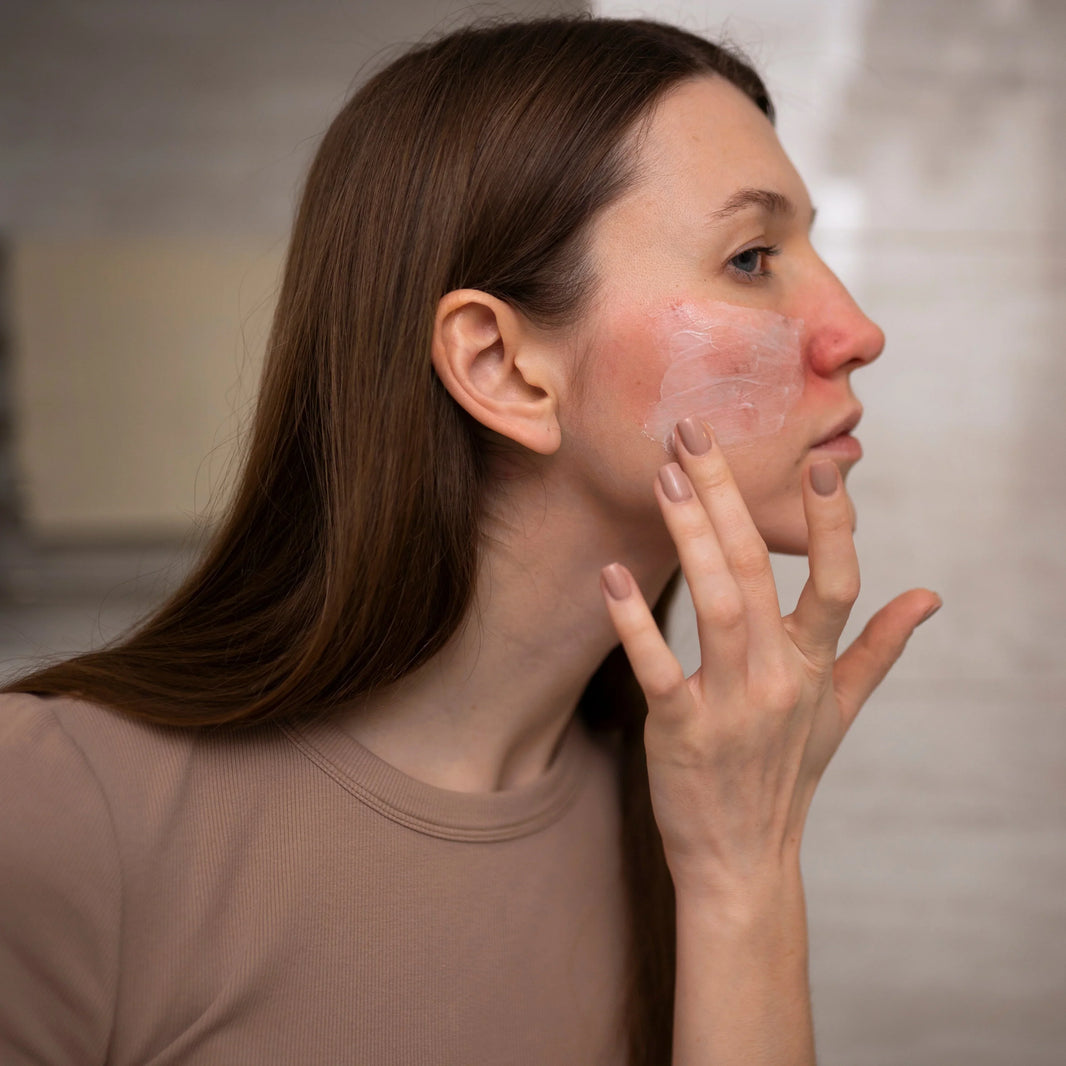Postnatal recovery support encompasses a diverse range of interventions designed to address the physical, psychological, and social challenges women face after childbirth. This critical period of transition demands specialized care as women navigate significant physiological changes while adapting to new parental responsibilities. Research indicates that targeted postnatal recovery support can significantly improve maternal wellbeing, reduce postnatal discomfort, and mitigate the risk of postpartum mental health conditions. This report examines the mechanisms and pathways through which postnatal recovery support functions, identifies proven intervention strategies, and analyzes emerging approaches that require further validation, providing a comprehensive overview of the current state of knowledge regarding postnatal recovery support.
Understanding Postnatal Recovery Needs
The postnatal period represents a time of profound change for new mothers, characterized by physiological healing, psychological adjustment, and social role transitions. Many women experience postnatal discomfort that can significantly impair their recovery and overall well-being, affecting their quality of life during this critical period7. The postpartum phase is typically characterized by physical challenges including diminished pelvic floor muscles, diastasis recti, as well as psychological concerns such as postpartum depression and anxiety3. These multifaceted challenges necessitate comprehensive support systems designed to address the diverse needs of recovering mothers.
The scope of postnatal recovery extends beyond physical rehabilitation to encompass psychological healing and social reintegration. Psychological health issues, musculoskeletal conditions, cardiorespiratory fitness, and weight retention are among the postpartum health concerns that targeted interventions can positively influence14. The recovery journey is further complicated by socioeconomic factors, cultural contexts, and pre-existing health conditions, creating unique recovery trajectories for each woman. Understanding these complexities is essential for developing effective postnatal recovery support programs that can meet the diverse needs of postpartum women.
Physiological Aspects of Postnatal Recovery
Physiological recovery after childbirth involves multiple body systems gradually returning to pre-pregnancy states. Physical therapy plays a crucial role in this process, addressing the significant prenatal and postnatal physical, physiological, and emotional changes that women experience3. Postnatal physical therapy specifically targets the restoration of physical function, stabilization of the core muscles, and correction of residual discomforts that commonly persist after childbirth3. These interventions not only promote quicker physical healing but also contribute to improved mental health and overall quality of life for new mothers.
The physical recovery process involves targeted approaches for specific postpartum conditions. Tailored physical therapy interventions include pelvic floor strengthening exercises to address weakened muscles, core stability training to manage diastasis recti, and postural alignment techniques to alleviate back pain and other musculoskeletal discomforts3. These therapeutic approaches work through mechanical, neural, and proprioceptive pathways to restore optimal function and relieve pain. Timely intervention is particularly important, as early rehabilitation can prevent the development of chronic conditions that may otherwise persist long after childbirth.
Psychological Mechanisms in Postnatal Recovery
Psychological recovery following childbirth operates through several key mechanisms that contribute to maternal mental health. Perceived social support plays a significant role in reducing postpartum stress, with research indicating that this support functions through the mediating factors of marital satisfaction and maternal postnatal attachment4. The psychological transition to motherhood involves complex emotional processing that can be either supported or hindered by the woman's social environment and personal resources.
Evidence suggests that creative interventions can facilitate psychological recovery from postpartum depression. Group singing, for example, has been shown to facilitate recovery from the symptoms of postnatal depression, providing an innovative approach to supporting maternal mental health1. This suggests that communal creative activities may offer therapeutic benefits by fostering connection, self-expression, and emotional regulation. The social dimension of such activities appears to reinforce their effectiveness, highlighting the interconnection between psychological and social aspects of postnatal recovery.
Pathways of Effective Postnatal Support
Postnatal recovery support functions through several interconnected pathways that collectively address the comprehensive needs of new mothers. These pathways include professional healthcare services, social support networks, and self-care practices that work in concert to facilitate optimal recovery. Understanding these pathways is essential for designing effective support systems that can reach women across diverse contexts and circumstances.
Professional Healthcare Interventions
Healthcare professionals play a pivotal role in facilitating postnatal recovery through structured interventions. Nurse-midwives provide focused interventions that have been demonstrated to significantly reduce postnatal discomfort and enhance quality of life among postpartum women7. These interventions typically include wound care, pain management, lactation support, and education about postpartum physiological changes. The effectiveness of these professional interventions underscores their importance in standard postpartum care protocols aimed at enhancing maternal well-being.
Physical therapy serves as another crucial professional pathway for postnatal recovery. During the postpartum phase, physical therapists address diminished pelvic floor muscles, diastasis recti, and other physical challenges through tailored rehabilitation programs3. These interventions operate by gradually rebuilding strength, restoring functional movement patterns, and reestablishing neuromuscular control. The physical therapy approach to postnatal recovery represents a well-established pathway that has demonstrated benefits for improving physical function and reducing discomfort in the postpartum period.
Social Support Networks and Peer-Based Recovery
Social support networks constitute a fundamental pathway through which postnatal recovery is facilitated. Research indicates that recovery processes can be "contagious" with peer champions and groups serving as primary mechanisms for spreading recovery-promoting behaviors and attitudes18. This social contagion effect highlights the potential of community-based approaches to amplify recovery outcomes beyond what individual interventions might achieve alone.
A hub and spoke model for peer-based recovery support services has shown promise in creating visible recovery while actively engaging with and supporting community growth18. This model operates through community connection and assertive linkage principles to offer core resources to local communities. The sustainability of recovery communities appears to rest on effective community engagement and responsive addressing of community needs, suggesting that social infrastructure development represents a critical pathway for enhancing postnatal recovery support systems.
Technology-Enabled Recovery Support
Technological innovations are creating new pathways for delivering postnatal recovery support. Telehealth and digital interventions have demonstrated potential for improving accessibility to recovery services, particularly for women facing geographical, mobility, or childcare barriers. There is tentative support for the use of remote intervention as a means of improving physical activity in postpartum patients, though standardization of approaches across studies remains challenging14.
Web-based and home-based postnatal psychoeducational interventions for first-time mothers have undergone cost-effectiveness analysis, indicating their potential as sustainable pathways for support delivery15. These digital approaches function by providing on-demand information, facilitating remote monitoring, enabling virtual consultation, and creating online support communities. While technological solutions show promise, their effectiveness appears to depend on thoughtful design that accounts for digital literacy, access to devices, and integration with existing healthcare systems.
Targets of Postnatal Recovery Interventions
Postnatal recovery interventions target multiple dimensions of maternal well-being, including physical rehabilitation, mental health, social integration, and parenting capacity. These targets reflect the holistic nature of recovery needs and recognize that improvement in one domain often positively affects others. Identifying appropriate targets based on individual needs assessment is essential for personalizing recovery support.
Physical Health Targets
Physical recovery interventions primarily target the restoration of functional capacity and management of postpartum discomfort. These interventions focus on addressing diminished pelvic floor muscles, diastasis recti, and other physical changes that commonly occur after childbirth3. By targeting these specific physiological aspects, physical therapy and related approaches aim to restore optimal physical function, stabilize core musculature, and alleviate the residual discomforts that many women experience during the postpartum period.
Physical activity interventions target multiple health parameters including psychological health, musculoskeletal conditions, cardiorespiratory fitness, and postpartum weight retention14. These targets reflect the multifaceted benefits of physical activity for postnatal recovery and highlight the interconnection between physical and psychological well-being. International guidelines for postpartum physical activity have been published, though research into the effectiveness of and patient compliance with physical activity programs in this population remains limited14.
Mental Health Targets
Mental health represents a critical target for postnatal recovery interventions, with particular focus on preventing and treating postpartum depression and anxiety. The prevalence of postpartum depression varies across populations, with research indicating that refugee and asylum-seeking women experience a rate of 22.5% compared to 17.5% in non-refugee/asylum-seeking women2. This elevated risk highlights the importance of targeted interventions that address the unique risk factors faced by vulnerable populations.
Interventions targeting postpartum mental health operate through various mechanisms including enhancing perceived social support, which has been shown to influence postpartum anxiety through moderated mediation pathways12. Group activities such as singing have demonstrated effectiveness in facilitating recovery from symptoms of postnatal depression, suggesting that communal creative expression may be a valuable target for psychological recovery support1. These diverse approaches reflect the complex nature of postpartum mental health and the need for multifaceted intervention strategies.
Social Support and Maternal Role Adaptation
Social support structures represent important targets for postnatal recovery interventions. Research indicates that refugee and asylum-seeking women may benefit from support groups, individual support, self-coping mechanisms, and familial support in managing postpartum depression2. These social interventions target the isolation, stress, and adjustment challenges that can complicate recovery, particularly for women experiencing additional vulnerabilities or transitions.
Maternal postnatal attachment and marital satisfaction serve as both targets and mediators in recovery support, influencing how perceived social support affects postpartum stress4. Interventions targeting these relationship dimensions aim to strengthen the interpersonal resources available to recovering mothers. Additionally, infant caregiving approaches have been identified as important targets in special populations such as women recovering from opioid use disorder, highlighting the interconnection between recovery and the development of parenting capacity9.
Evidence-Based Approaches to Postnatal Recovery
The evidence base for postnatal recovery support varies considerably across intervention types, with some approaches demonstrating robust effectiveness while others show promise but require further validation. Understanding this evidence landscape is essential for prioritizing interventions and identifying gaps requiring additional research.
Well-Established Interventions
Nurse-midwife interventions have demonstrated significant effectiveness in reducing postnatal discomfort and enhancing quality of life among postpartum women. Research shows that women receiving focused interventions from nurse-midwives experience meaningful improvements in postpartum recovery outcomes compared to control groups7. These findings support the integration of such targeted interventions into standard postpartum care protocols to enhance maternal quality of life and overall well-being.
Physical therapy represents another well-established approach to postnatal recovery. Despite documented benefits, access barriers including financial and sociocultural factors limit utilization of these services3. The incorporation of technological innovations such as wearables, telehealth, and virtual reality offers promise for expanding access to physical therapy interventions. These technologies may help overcome access barriers while maintaining the effectiveness of traditional in-person approaches.
Promising but Less Validated Approaches
Group singing represents a promising but less thoroughly validated approach to supporting recovery from postpartum depression. Comparative qualitative research indicates that this creative group activity facilitates recovery from depressive symptoms1. While this approach shows potential, particularly for its social engagement and creative expression components, more rigorous quantitative evaluation is needed to establish its effectiveness relative to conventional treatments.
Mobile health (mHealth) interventions for postpartum family planning and recovery support in low- and middle-income countries show promise but require further context-specific validation16. These digital approaches offer potential for scaling support services in resource-limited settings, but their effectiveness depends on factors including mobile phone access, use patterns, and women's motivation. The realist review of these interventions highlights the importance of understanding the contexts, conditions, and mechanisms that influence program engagement and impact.
Postnatal Recovery in Special Populations
Different populations face unique challenges in postnatal recovery that require tailored support approaches. Understanding these specific needs is essential for designing effective interventions that address the particular barriers and risk factors relevant to diverse groups of women.
Refugee and Asylum-Seeking Women
Refugee and asylum-seeking women experience a higher prevalence of postpartum depression (22.5%) compared to non-refugee populations (17.5%), reflecting the impact of unique stressors on their recovery process2. These women face specific challenges including domestic abuse, separation from support networks, stress, pre-migrational traumatic experiences, prior history of mental illness, economic hardship, and discrimination. These distinct risk factors necessitate specialized approaches to support that address both the universal aspects of postpartum recovery and the specific needs arising from displacement and migration experiences.
Interventions for refugee and asylum-seeking women may include support groups, individual support, self-coping mechanisms, and facilitation of familial support2. However, research on interventions for this population remains limited, highlighting a significant gap in the evidence base. Further investigation is warranted to develop and validate culturally appropriate and trauma-informed approaches that can effectively support postnatal recovery in this vulnerable group.
Women with Opioid Use Disorder
Women with opioid use disorder (OUD) face distinct challenges in the postpartum period, with research indicating that the risk of returning to opioid misuse is particularly high after childbirth despite often maintaining treatment adherence during pregnancy9. This population requires specialized recovery support that addresses both postpartum needs and substance use disorder management. Understanding the role of hormones and infant caregiving approaches as predictors of postpartum opioid misuse represents an important direction for developing targeted interventions.
Recovery support and continuity of care protocols for women with OUD are often unclear after childbirth, contributing to vulnerability during this critical period6. Research indicates that maternal opioid-related overdose deaths frequently occur 6-12 months after childbirth, underscoring the importance of sustained recovery support throughout the extended postpartum period6. Addressing social determinants of health and enhancing treatment retention through comprehensive recovery support systems represents a promising approach for improving long-term maternal health outcomes in this population.
Barriers and Facilitators to Effective Recovery Support
The implementation and effectiveness of postnatal recovery support are influenced by various barriers and facilitators that operate at individual, interpersonal, organizational, and societal levels. Understanding these factors is essential for designing interventions that can overcome obstacles and leverage existing resources to maximize impact.
Access Barriers to Recovery Support
Despite the demonstrated benefits of physical therapy and other professional interventions, significant barriers limit access to these services for many postpartum women. Financial constraints and sociocultural factors have been identified as major barriers that prevent women from receiving appropriate recovery support3. These access limitations can exacerbate disparities in recovery outcomes, with disadvantaged populations experiencing compounded challenges in the postpartum period.
The standardization and definition of the postpartum period varies across research and practice, creating confusion about appropriate timing and duration for recovery interventions14. This lack of standardization complicates the development of clear guidance for both providers and patients. Additionally, compliance with recovery support protocols tends to decrease over time, with particularly lower compliance observed in vulnerable populations such as women with opioid use disorder9. These temporal patterns highlight the need for sustained engagement strategies throughout the extended recovery period.
Technological Innovations as Facilitators
Technological advancements including wearables, telehealth, and virtual reality hold promise for overcoming access barriers and enhancing the effectiveness of postnatal recovery support3. These innovations can extend the reach of professional services to underserved populations and areas, potentially democratizing access to evidence-based recovery support. Remote interventions have shown tentative support for improving physical activity in postpartum patients, suggesting their potential utility as adjuncts or alternatives to traditional in-person approaches14.
Web-based and home-based postnatal psychoeducational interventions for first-time mothers have demonstrated cost-effectiveness, indicating their potential sustainability as service delivery models15. These digital approaches can reduce barriers related to transportation, childcare, and scheduling conflicts that often complicate access to in-person services. However, the effectiveness of technology-enabled interventions depends on addressing digital literacy gaps, ensuring device access, and creating user-friendly interfaces that accommodate the practical constraints of caring for a newborn.
Future Directions in Postnatal Recovery Research
The current evidence landscape reveals several important gaps and opportunities for advancing postnatal recovery support. Future research should address methodological limitations in existing studies while exploring innovative approaches to meeting the diverse needs of postpartum women.
Addressing Research Gaps
Current research into postpartum recovery support demonstrates several significant gaps that warrant attention. Studies on interventions for postpartum depression in refugee and asylum-seeking women remain limited despite the elevated prevalence and unique risk factors in this population2. Similarly, recovery support and continuity of care protocols for women with opioid use disorder lack clarity, particularly for the critical 6-12 month period after childbirth when overdose risk appears elevated6.
The effectiveness of and patient compliance with physical activity programs in the postpartum population require further investigation to establish evidence-based guidance14. Standardization of terminology, timelines, and outcome measures across studies would enhance comparability and strengthen the overall evidence base. Additionally, research examining the long-term impacts of postnatal recovery interventions beyond the immediate postpartum period would provide valuable insights into the sustainability of benefits and potential prevention of chronic conditions.
Promising Innovative Approaches
Peer-based recovery support services using a hub and spoke model show promise for creating visible recovery communities while actively engaging with and supporting community development18. This approach emphasizes recovery as a contagious process that spreads through peer champions and groups, suggesting potential for scaling impact through social network effects. Further evaluation of these peer-driven models could identify key components and implementation strategies for maximizing their effectiveness across diverse contexts.
Hormonal and infant caregiving approaches represent novel targets for supporting postnatal recovery, particularly in special populations such as women with opioid use disorder9. Understanding the biological and behavioral mechanisms through which these factors influence recovery could inform the development of innovative intervention strategies. Additionally, telehealth-delivered physical activity interventions have shown potential for influencing postpartum women's engagement in physical activity, suggesting an important direction for expanding access to movement-based recovery support14.
Conclusion
Postnatal recovery support encompasses a diverse array of interventions targeting the physical, psychological, and social dimensions of maternal well-being after childbirth. The most well-established approaches include nurse-midwife interventions and physical therapy, which have demonstrated effectiveness in reducing postnatal discomfort and enhancing quality of life. Social support mechanisms, including peer-based recovery programs, play a crucial role in facilitating recovery, particularly for psychological aspects such as postpartum depression and anxiety. Emerging technologies offer promising pathways for expanding access to recovery support, though their implementation must account for potential barriers related to digital literacy and device access.
Special populations, including refugee and asylum-seeking women and those with opioid use disorder, face unique challenges that require tailored approaches to postnatal recovery support. The current evidence base reveals significant gaps in understanding effective interventions for these vulnerable groups, highlighting important directions for future research. Additionally, standardization of terminology and outcome measures across studies would strengthen the overall evidence landscape and facilitate more direct comparisons between intervention approaches.
The future of postnatal recovery support lies in developing integrated, accessible systems that combine evidence-based professional interventions with peer support networks and technological innovations. By addressing existing barriers and building on promising approaches, these comprehensive support systems can help ensure that all women have access to the resources they need for optimal recovery after childbirth. This holistic approach recognizes that postnatal recovery represents not merely the absence of complications but the achievement of physical, psychological, and social well-being during the critical transition to motherhood.
Citations:
- https://www.ncbi.nlm.nih.gov/pmc/articles/PMC6098577/
- https://www.ncbi.nlm.nih.gov/pmc/articles/PMC10871679/
- https://www.semanticscholar.org/paper/cfbb81f326092e3b8fc03f4366f4a894060e4545
- https://www.ncbi.nlm.nih.gov/pmc/articles/PMC10496285/
- https://www.ncbi.nlm.nih.gov/pmc/articles/PMC11659109/
- https://www.ncbi.nlm.nih.gov/pmc/articles/PMC10129803/
- https://www.semanticscholar.org/paper/41f9d3abecc0d6190873bb744a53098c1bc955bb
- https://pubmed.ncbi.nlm.nih.gov/26468200/
- https://www.semanticscholar.org/paper/58f73919e1ae42ef63f51a119143edd4d1d3fdc6
- https://pubmed.ncbi.nlm.nih.gov/20141281/
- https://www.ncbi.nlm.nih.gov/pmc/articles/PMC11438177/
- https://pubmed.ncbi.nlm.nih.gov/37273134/
- https://www.semanticscholar.org/paper/bcf47127190d1d703297e34c61f5c2c09a74bd8b
- https://www.semanticscholar.org/paper/1e24d0b5d042dced40709560f0268e9437ad9df9
- https://www.ncbi.nlm.nih.gov/pmc/articles/PMC8956997/
- https://www.ncbi.nlm.nih.gov/pmc/articles/PMC11257288/
- https://pubmed.ncbi.nlm.nih.gov/36353976/
- https://www.semanticscholar.org/paper/3a14ee386007734c58f5b3d1787dfb889c06e9b5
- https://www.ncbi.nlm.nih.gov/pmc/articles/PMC8579328/
- https://www.semanticscholar.org/paper/e7697a2d5234ff936d7ca9dfcafcf16fab144fa6
- https://www.semanticscholar.org/paper/2201c276d5e9c9ceb91b358f0c5e8cd508939227
- https://www.ncbi.nlm.nih.gov/pmc/articles/PMC10466152/
- https://pubmed.ncbi.nlm.nih.gov/38860737/
- https://pubmed.ncbi.nlm.nih.gov/38015351/
- https://pubmed.ncbi.nlm.nih.gov/32351122/
- https://pubmed.ncbi.nlm.nih.gov/37969026/
- https://www.ncbi.nlm.nih.gov/pmc/articles/PMC11860911/
- https://www.ncbi.nlm.nih.gov/pmc/articles/PMC9613920/
- https://www.ncbi.nlm.nih.gov/pmc/articles/PMC10806596/
- https://www.semanticscholar.org/paper/74c0e19617c7e92736a6bcc844a7b965b70dae5f
- https://www.ncbi.nlm.nih.gov/pmc/articles/PMC11386208/
- https://www.semanticscholar.org/paper/605dac3bb958ede986fc4ae4023bbd8bef91c23a
- https://www.semanticscholar.org/paper/5e22f566c77835d7b5d9fbf6e1051cd54ce0d0ed
- https://www.ncbi.nlm.nih.gov/pmc/articles/PMC9030898/
- https://www.ncbi.nlm.nih.gov/pmc/articles/PMC11510825/
- https://www.semanticscholar.org/paper/ff9b1af4e2f0082e3ccf9755232f7c4797d3b913
- https://www.semanticscholar.org/paper/4e479973f0e8df84516549f8cf03600d9544be95
- https://pubmed.ncbi.nlm.nih.gov/36448446/
- https://www.ncbi.nlm.nih.gov/pmc/articles/PMC11328347/
- https://www.semanticscholar.org/paper/5316991880d9ba6bfdf01a4ba97e33b927b1e03c
- https://pubmed.ncbi.nlm.nih.gov/36332201/
- https://www.ncbi.nlm.nih.gov/pmc/articles/PMC10682436/
- https://www.ncbi.nlm.nih.gov/pmc/articles/PMC8189036/
- https://www.semanticscholar.org/paper/c1821ce55c192d8b2309091a02af3aef48c05307
- https://www.semanticscholar.org/paper/4304a7126bd792cc5078959ecede66d7a3efa335








